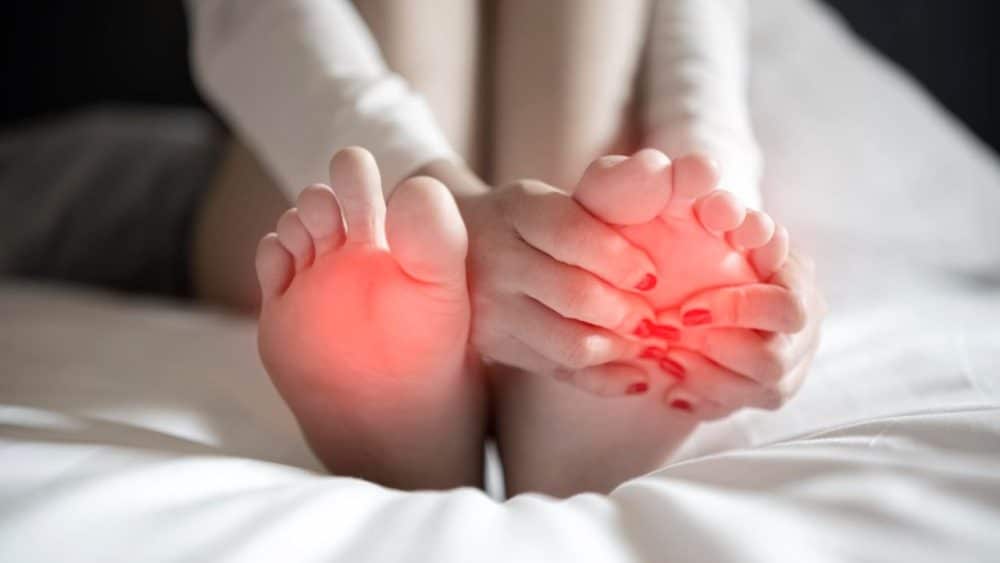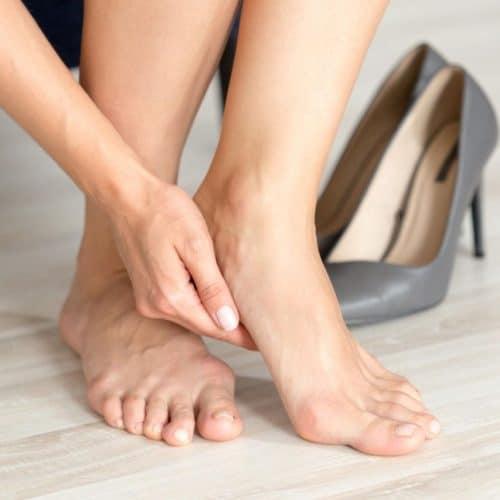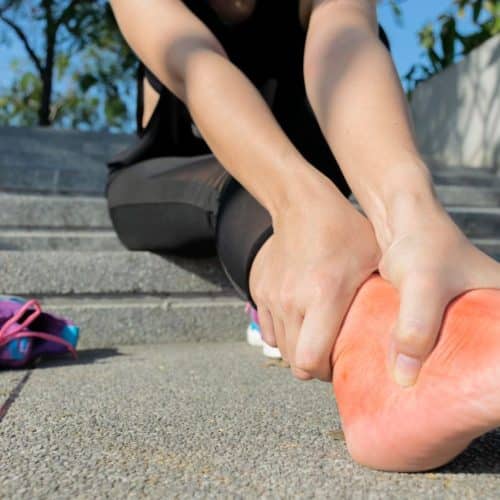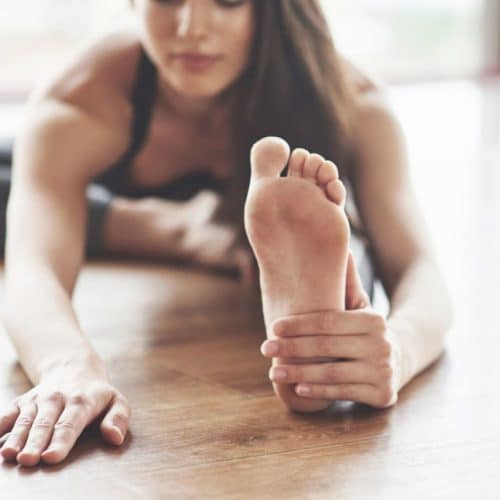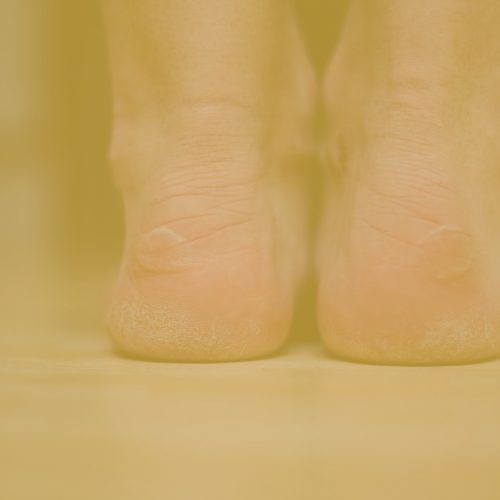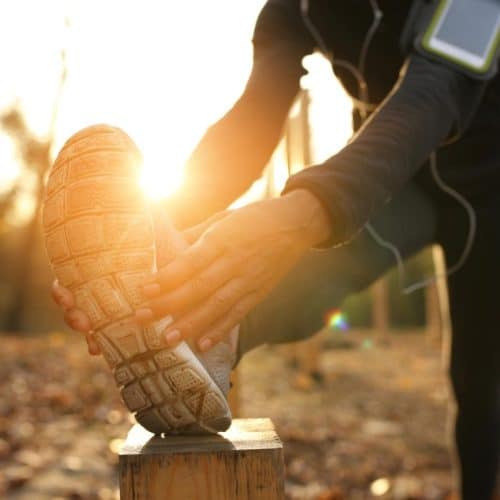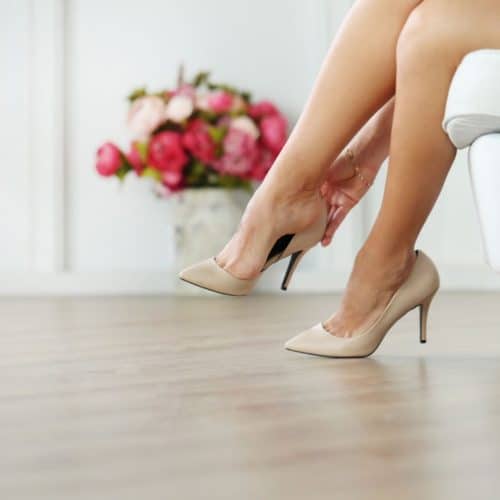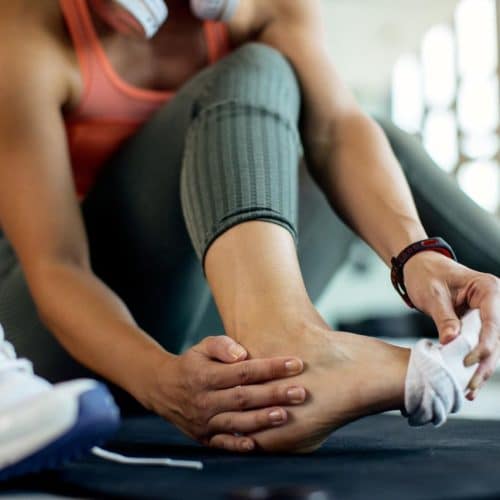Pain in the heel may be a terrible condition, reducing both our ability to participate in everyday activities and our general quality of life. One of the queries that is asked the most frequently by those who suffer from heel discomfort is, “What are the best shoes to wear?” Let’s go into more detail about the matter, shall we?
What Causes Heel Pain?
Heel pain is a common foot complaint, but its origins can be diverse. Understanding the root causes can help find the right treatment and preventive measures. Here are some of the primary causes:
1. Plantar Fasciitis
- Description: This is one of the most common causes of heel pain. It involves inflammation of the plantar fascia, a thick band of tissue that runs across the bottom of the foot and connects the heel bone to the toes.
- Symptoms: Sharp pain in the heel, especially upon waking up or after prolonged sitting.
2. Heel Spurs
- Description: These calcium deposits form a bony protrusion on the underside of the heel bone. They often develop alongside plantar fasciitis but can occur independently.
- Symptoms: Intermittent or chronic pain while walking or running.
3. Achilles Tendinitis
- Description: This condition is an overuse injury of the Achilles tendon, the band of tissue that connects the calf muscles at the back of the lower leg to the heel bone.
- Symptoms: Pain and stiffness along the Achilles tendon, especially in the morning or after exercise.
4. Bursitis
- Description: Bursitis of the heel is the inflammation of the bursa, a small, fluid-filled sac located at the back of the heel that helps reduce friction between the Achilles tendon and the heel bone.
- Symptoms: Pain, swelling, and redness at the back of the heel.
5. Tarsal Tunnel Syndrome
- Description: This is a compression or squeezing on the posterior tibial nerve as it passes through the tarsal tunnel, a narrow space inside the ankle.
- Symptoms: A burning pain, tingling, or numbness in and around the heel.
6. Stress Fractures
- Description: These are tiny breaks in the heel bone, often caused by repetitive stress or forceful activities like jumping.
- Symptoms: Pain, swelling, and tenderness in a specific heel area.
7. Other Causes
- Description: Heel pain can also arise from systemic conditions like arthritis, ankylosing spondylitis, or Reiter’s syndrome. Additionally, wearing ill-fitting shoes, being overweight, or standing for extended periods can contribute to heel discomfort.
- Symptoms: Vary based on the specific condition but can range from dull aches to sharp, stabbing pains.
Key Recommendations
1. Neutral Shoes
- What are they? Neutral shoes are designed without added stability or motion control features. They are meant to support the foot’s natural biomechanics without any alterations.
- Why are they recommended? For individuals with heel pain, neutral shoes can provide a more natural foot motion. This ensures that the foot moves freely without any restrictions, reducing unnecessary strain on the heel and arch.
- Shopping Tip: When shopping for neutral shoes, look for terms like “neutral cushioning” or simply “neutral” on the shoe label or description.
2. Good Arch Support
- Importance: The foot’s arch plays a pivotal role in distributing the body’s weight evenly across the foot. Proper arch support can prevent or alleviate the symptoms of plantar fasciitis, a common cause of heel pain.
- Why is it crucial? A shoe with adequate arch support can reduce the strain on the heel, ensuring that the foot’s weight is spread out more evenly.
- Shopping Tip: For those with flat feet or high arches, consider shoes that offer specialised arch support or consider custom orthotic inserts.
3. Ample Cushioning
- Role of Cushioning: Cushioning in shoes acts as a shock absorber. Every step we take generates impact; cushioning helps to minimise this impact, especially on hard surfaces.
- Why is it essential? Adequate cushioning can significantly reduce the pressure and impact on the heel, offering relief from pain and discomfort.
- Shopping Tip: Memory foam, gel, and air-cushioned soles are popular choices for enhanced cushioning. Always try the shoe and walk around to ensure the cushioning feels comfortable.
4. Tread
- Purpose of Tread: The tread of a shoe refers to the design of the sole, particularly the pattern and depth of the grooves. It provides grip and stability on various surfaces.
- Why is it important? A shoe with a good tread can prevent slips or falls, ensuring that the foot remains stable. This is especially crucial for those with heel pain, as instability can exacerbate the condition.
- Shopping Tip: Depending on your activity level and where you’ll be wearing the shoes, choose a tread that suits your needs. For instance, hiking shoes will have a more aggressive tread compared to casual walking shoes.
When individuals have a solid awareness of these essential guidelines and the significance of their relevance, they are better equipped to make educated judgements when shopping for shoes, increasing the likelihood that they will pick footwear that provides relief from heel discomfort.
Additional Key Points
1. Avoid High Heels
- The Problem with High Heels: High heels elevate the heel, shifting the body’s weight forward. This can increase pressure on the forefoot and strain the arch and heel.
- Why Avoid Them? Regularly wearing high heels can exacerbate heel pain and even lead to other foot problems over time.
- Practical Tip: If you must wear heels for an occasion, opt for a lower, chunkier heel which distributes weight more evenly. Also, limit the time you spend in them and consider using cushioned inserts for added comfort.
2. Consider Orthotic Inserts
- What are Orthotic Inserts? These are custom-made shoe inserts designed to support and comfort the feet. They can address various foot issues, including heel pain.
- Benefits: Orthotic inserts can provide targeted support, especially if you have specific foot conditions or structural abnormalities.
- Consultation Tip: Before investing in custom orthotics, consult with a podiatrist to ensure they’re the right solution for your heel pain.
3. Regularly Replace Your Shoes
- Why is this Important? Shoes lose their support and cushioning over time. Worn-out shoes can exacerbate foot problems and fail to provide the necessary support.
- Replacement Tip: As a general rule, walking or running shoes should be replaced every 300-500 miles or at least once a year, depending on usage. Always check for signs of wear and tear, especially in the sole and cushioning.
4. Stretching and Exercises
- Role in Heel Pain Management: Regular foot and calf stretches can alleviate tension, strengthen muscles, and improve flexibility, all of which can help manage heel pain.
- Recommended Exercises: Consider exercises like calf raises, toe stretches, and towel stretches. Always ensure you’re using the correct technique to avoid further injury.
- Consistency Tip: Incorporate these stretches into your daily routine, preferably in the morning and evening, for best results.
5. Consult a Podiatrist
- Why See a Specialist? Persistent heel pain can be a sign of underlying issues. A podiatrist can provide a proper diagnosis and recommend targeted treatments.
- Benefits: Beyond footwear recommendations, a podiatrist can offer treatments like physical therapy, corticosteroid injections, or surgery for severe cases.
- Consultation Tip: If you’ve tried multiple remedies and still experience heel pain, it’s time to see a podiatrist. Early intervention can prevent complications and provide faster relief.
Individuals may adopt a holistic approach to managing heel pain by taking these extra aspects into consideration. This will ensure that the appropriate footwear is worn and adequate foot care and early treatments are carried out.
Optimising Your General Foot Health
Our feet bear the weight of our entire body, making them susceptible to various ailments. However, we can maintain optimal foot health with proper care and attention. Here are some strategies to consider:
1. Regular Foot Examinations
- Importance: Regularly inspecting your feet can help detect problems early, such as fungal infections, corns, or ingrown toenails.
- Tip: Check your feet weekly for abnormalities, discolourations, or cuts. If you notice anything unusual, consult a podiatrist.
2. Choose the Right Footwear
- Importance: Wearing appropriate shoes can prevent many foot problems.
- Tip: Ensure your shoes fit well, provide adequate support, and are suitable for your activity. Rotate between different pairs to let each set air out.
3. Maintain a Healthy Weight
- Importance: Excess weight can strain your feet, leading to pain and other issues.
- Tip: Adopt a balanced diet and exercise regimen to manage weight and reduce foot strain.
4. Stay Active
- Importance: Regular physical activity promotes good circulation and keeps the muscles of the feet strong.
- Tip: Incorporate foot-specific exercises, like toe curls or ankle rolls, to enhance foot strength and flexibility.
5. Practice Good Foot Hygiene
- Importance: Clean feet are less prone to infections.
- Tip: Wash your feet daily with soap and water, dry them thoroughly (especially between the toes), and moisturise to prevent dry skin.
6. Avoid Going Barefoot in Public Areas
- Importance: Public places like swimming pools or gym showers can be breeding grounds for foot infections.
- Tip: Always wear flip-flops or shower shoes in these areas to protect your feet.
7. Manage Medical Conditions
- Importance: Conditions like diabetes can impact foot health, making regular care and monitoring essential.
- Tip: If you have a medical condition that affects your feet, follow your doctor’s recommendations closely and have regular foot check-ups.
8. Stay Hydrated
- Importance: Proper hydration can help reduce swelling and cramps in the feet.
- Tip: Drink the recommended amount of water daily and elevate your feet if you notice swelling.
9. Massage and Relaxation
- Importance: Massaging the feet can stimulate circulation and relieve tension.
- Tip: Consider regular foot massages or use a foot roller for self-massage. Epsom salt foot soaks can also provide relaxation and relief.
Optimising foot health combines proactive care, awareness, and timely interventions. By adopting these practices, you can ensure that your feet remain healthy, strong, and ailments-free.
Conclusion
It can be difficult to manage heel pain effectively. Still, with the appropriate footwear and care, you can considerably minimise discomfort and enhance the quality of your day-to-day life. Always keep in mind the importance of wearing neutral shoes that have adequate cushioning, arch support, and tread. In addition, if you are confused about the best approach to treat your heel pain, you should always seek the advice of a podiatrist.


